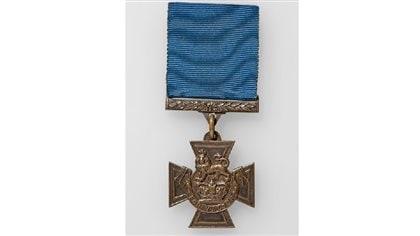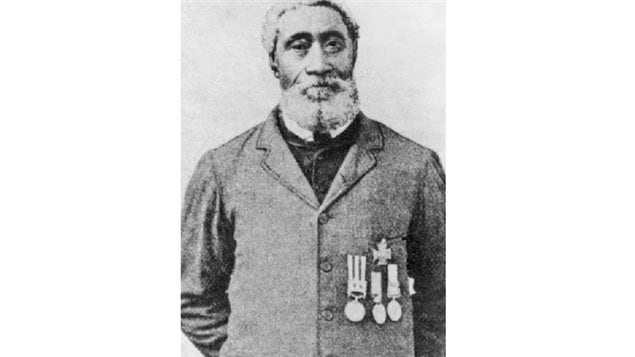William Hall was the first black person to be awarded the Empire’s highest award for valour, the Victoria Cross.
Born in April 1827 in Horton, Nova Scotia, he was the son of free black slaves rescued by a British frigate during the war of 1812.
As a teenager, he worked building sailing ships, then shipped aboard a trading vessel to ports around the world.
Joining the British Royal Navy ini 1854, serving on the HMS Rodney during the Crimean War. Of obvious bravery and skill, assisting ground forces by manning artillery, he was awarded the British and Turkish Crimea medals with Sevastapol and Inkerman clasps and shortly afterward was appointed captain of the foretop on the HMS Shannon.
The Shannon was ordered to Lucknow India where a British garrison was under siege in May 1857.
The relief brigade of about 400 then made its way on foot and by barge to Cawnpore , fighting along the way. There they met with another force and marched on Lucknow.

Hall was in one of four gun crews sent with heavy 24-pounder cannon to attack the Shah Najaf mosque which was a stronghold of thousands of sepoy rebels.
Starting at 400 yards, they advanced under withering fire until the heavy guns were only 20 yards from the wall.
“I remember,” Hall is quoted as saying, “that after each round we ran our gun forward, until at last my gun’s crew were actually in danger of being hurt by splinters of brick and stone torn by the round shot from the walls we were bombarding.”
As heavy fire took its toll, only Hall and a Lieutenant were left as they continued nonetheless to fire until the wall was breached and British forces could storm the rebels.
“Lieutenant (now Commander) Young, late Gunnery Officer of Her Majesty’s ship ‘Shannon,’ and William Hall, ‘Captain of the Foretop,’ of that Vessel, were recommended by the late Captain Peel for the Victoria Cross, for their gallant conduct at a 24-Pounder Gun, brought up to the angle of the Shah Nujjiff, at Lucknow, on the 16th of November, 1857.”
– Victoria Cross citation, The London Gazette, 1 February 1859.
Hall continued to serve in the Royal Navy until 1876, retiring as Quartermaster. He returned to live with his sisters on a farm overlooking the Minas Basin.
A modest man, he lived and farmed without recognition until 1901, when HRH the Duke of Cornwall and York (later King George V) visited Nova Scotia. A parade of British veterans was held, and Hall wore his Victoria Cross and three other service medals. The Duke inquired about the medals and drew attention to Hall’s service.
Three years later, William Hall died at home, of paralysis, and was buried without military honours in an unmarked grave. In 1937, a local campaign was launched to have Hall’s valour recognized by the Canadian Legion, but it was eight more years before his body was reburied in the grounds of the Hantsport Baptist Church. The monument erected there bears an enlarged replica of the Victoria Cross and a plaque that describes Hall’s courage and devotion to duty.
Subsequently, a branch of the Canadian Legion in Halifax was renamed in his honour. A gymnasium in Cornwallis, the DaCosta-Hall Educational Program for Black students in Montreal, and the annual gun run of the International Tattoo in Halifax also perpetuate his name.
In 1967, William Hall’s medals were returned to Canada from England to be shown at Expo ‘67 in Montreal. As property of the Province of Nova Scotia, they were later transferred to the Nova Scotia Museum.
With files from Veterans Affairs, Maritime Museum of the Atlantic







For reasons beyond our control, and for an undetermined period of time, our comment section is now closed. However, our social networks remain open to your contributions.